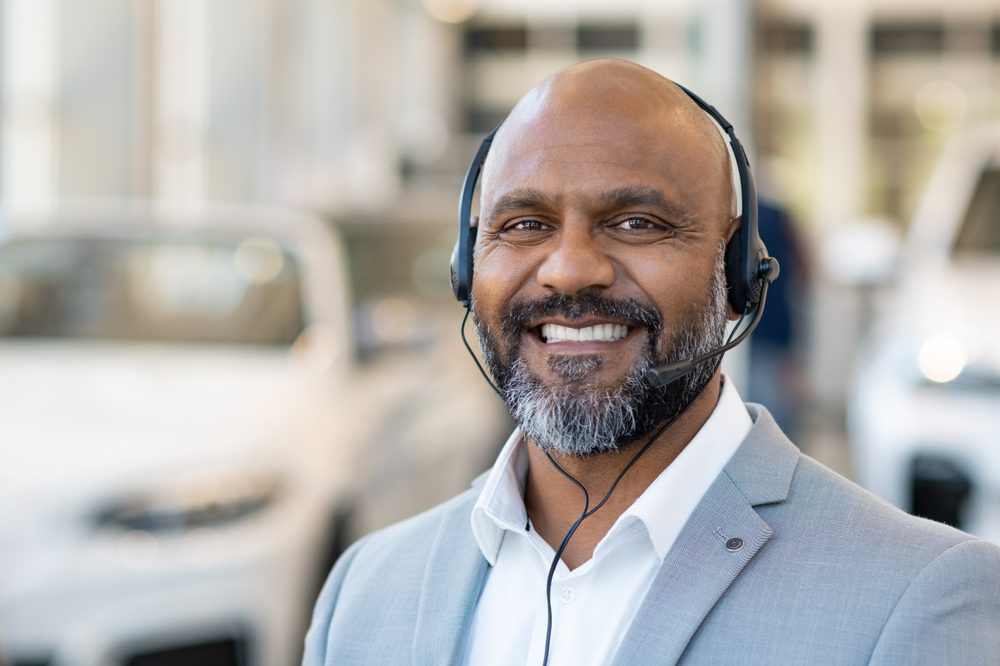If it feels like connecting with your shoppers by phone has become more challenging than in years past, you’re not alone. In a recent survey of TrueCar dealers, 80% declared that reaching customers by phone has become harder.
Consumer insights confirm what we’ve all been feeling: people are simply less likely to answer a phone call now compared to years past. According to Zipwhip, a staggering 87% of consumers report they “often/very often” reject or ignore calls from a business or unknown number.
Cell phone companies have reacted accordingly, creating built-in functionality that enables consumers to automatically reject unknown phone numbers. This is in addition to the slew of call-blocking apps readily available in the marketplace.
As a result, nearly 8 out of 10 sales calls received are now routed to voicemail. While consumers can easily listen to or read the transcript of their voicemail dictation, 90% of first time calls that go to voicemail are never returned.
The Fall of the Call: Annoying, Intrusive, Unnecessary
 Consumers have a polarizing relationship with their smartphones. On one hand, smartphones have become nearly indispensable. But when asked to describe – in one word – how they feel about receiving actual phone calls, consumers used words like annoying, intrusive, and unnecessary.
Consumers have a polarizing relationship with their smartphones. On one hand, smartphones have become nearly indispensable. But when asked to describe – in one word – how they feel about receiving actual phone calls, consumers used words like annoying, intrusive, and unnecessary.
While shoppers are fatigued by traditional methods of communication like phone calls and voicemail, they still want to talk to businesses. They just want to do it differently.
- Nearly 9 out of 10 consumers say they would like to communicate via messaging with businesses.
- 3 out of 4 consumers already communicate with businesses via chat or messaging.
- Roughly three quarters of consumers will respond to a business text within an hour.
Consumers are particularly comfortable and positive about texting. When asked to describe texting in one word, their responses included words like convenient, good, and efficient.
A MISSED OPPORTUNITY?
Given the shifts in consumer communication preferences, dealers are missing an opportunity for deeper engagement by sticking to just traditional channels like phone, voicemail and email.
Intellectually, dealers certainly understand the value of alternate communication methods, particularly when it comes to texting. In a recent TrueCar survey, more than 90% of dealers rated text messaging as the most effective method to communicate with leads. Based on the robust numbers of dealers who report texting to be effective, you might expect text to be their “go-to” way of communicating with consumers.
Yet that’s not the case.
In evaluating 12,000 TrueCar mystery shops, dealerships utilized text in fewer than half of their responses to consumers. Of the dealers that did text, 83 percent sent 2 or fewer texts across all touch points with the consumer. Compare this to the everyday behavior of consumers who, on average, send about 3 texts per hour.
Dealers Who Modernize Their Communication Strategy Win
Beyond texting, there are other communication channels that dealers should consider incorporating. Here’s why: Salespeople who use 3 or more forms of communication are 4x more likely to make contact with the consumer vs. those who only utilize 1.
Considering the average consumer has three messaging apps on their phones including Facebook Messenger, it makes sense that 78 percent of salespeople who use social media outsell those who don’t.
Chat is also engaging. According to Polk data, 1 in 3 chat users purchases a vehicle after engaging in a live chat on the dealer’s website.
Tips and Takeaways


- Respect the consumer’s preferred method of contact. Respond to customers in the method they’ve chosen to communicate and resist the urge to immediately transition to the phone. For example, the shopper who reaches out to you or your store via text should receive a response via text, not a phone call. The same applies to other channels like social messaging and chat. Respecting the communication method up front will allow you to transition to a better phone call later.
- Get to the point. To build rapport, it’s important to respond quickly and address customer questions. When using text/chat, be concise and eliminate unnecessary verbiage.
- Be appropriate for the platform. Each communication channel has its own quirks and personality. The better you can align to the medium and its behaviors, the more successful you’ll be. For example, while it might be acceptable to return an email after several hours, people expect more immediacy via text or chat. Moreover, while emails and phone conversations tend to be longer in nature, you don’t want to write a novel in a text/chat.
- Stay professional. The messages relayed to your customers are a reflection of your store, your company, and your brand. Take a moment to spell/grammar check before hitting send. Although gifs, emojis and LOLs are acceptable when texting, don’t overuse them in a professional conversation. Lastly, don’t reference failed contact attempts made on other channels as this may make the customer more likely to ignore your current message too.
- Humanize yourself with video. A short, self-shot video of yourself or the vehicle is an easy way to separate yourself from the competition. Video can help build value in you, your store, and your product, all while increasing engagement with consumers. In fact, emails with a video attached see a 26% increase in replies when compared to emails that only contain text.
Going Forward
It’s clear that consumer behavior and communication preferences will continue to evolve. With this evolution, it’s critical to meet consumers where they are, which may mean diversifying our current communication strategies. While we ponder what the future holds, one thing is clear: Those dealers that can effectively implement a multi-channel communication strategy will stand out in a crowded marketplace and set themselves up for success.








